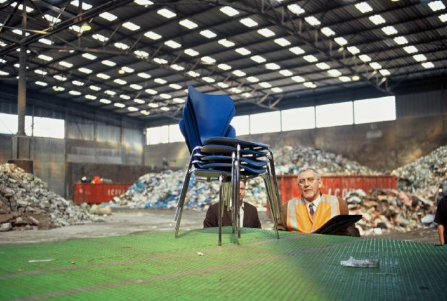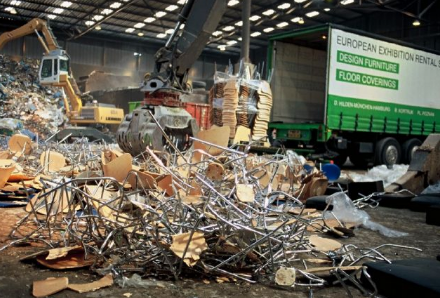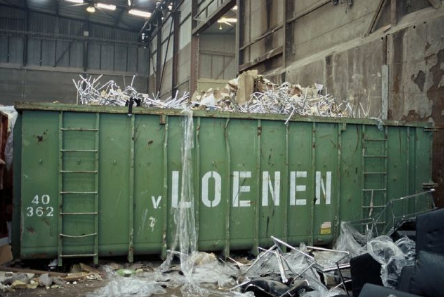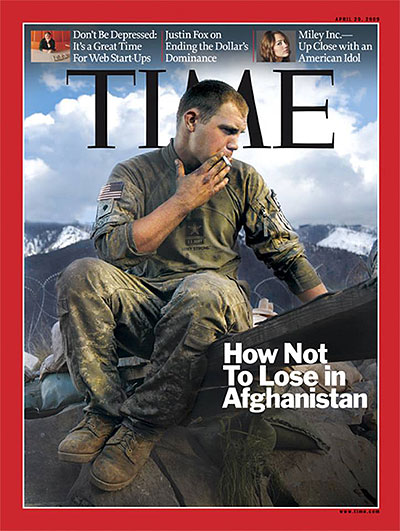Notes
Holocaust In The Furniture Business?

by contributer Robert Hariman
A state decrees that its pure stock is being diluted and displaced by inferior populations, many of them from Eastern Europe. The situation is becoming intolerable, and drastic steps must be taken. A Bekämpfung (fight) is declared. The world is notified and even asked to help the state assert its legal right to protect its property and identity. A systematic program of extermination begins.
In the photo above, a shipment of the impure element is being assessed for disposal after having arrived at the processing center.
I’d understand if you think I’ve got a screw loose. Chairs are not people. Manufactured objects are recycled all the time–and it’s considered virtuous to sort your cans and plastic containers to that end. But I was paraphrasing the statements made by the Fritz Hansen furniture company at a weird web site where they display their efforts to collect and destroy copies of their signature lines. If their declaration of a struggle to maintain the purity of their brand had been nothing but text, I might have skimmed right over it. But then there are the images: the site includes two slide shows and a video of chairs being destroyed, along with a video of the company president justifying the program. The stiff demeanor, Germanic accent (it’s a Danish company), bureaucratic prose, and gray modernist architecture could all come from a movie on the Final Solution. Or so it seems when you look through the slide show.
I know my reaction is not unique because a reader tipped me off to these images, which have an uncanny resemblance to Holocaust photographs….At first, the allusion is very faint: a sense of vulnerable bodies being exposed, assessed, and destroyed in an industrial setting. The second image goes a step further: those flesh-colored torsos could be naked bodies being readied for the gas. The next image goes further still, evoking the skeletal corpses being stacked like cord wood in the concentration camp yard.
I’m not going to show the originals; one reason is that I’m assuming they already can be called to mind. And that raises another issue, because the company insists that “A copy has nothing to do with an original.” That assertion of radical difference among similar things cuts in several directions at once: back to fascism and across the contemporary digital world–where, for example, my copies of their images apparently have nothing to do with the original–and forward to a future when more and more of human life and capabilities will be copied into other things. Fortunately, however, the “Republic of Fritz Hansen”–they really say that–is ready to take a stand for the industrial equivalent of racial purity.
I would not endorse dismantling copyright laws, but there is something disturbing about producing photographs of destruction. Perhaps my sympathetic reaction is what is really out of place–an example of the emotional response typically evoked by the photographic relationship but rightly applied only to people. Because chairs are shaped to conform to the human body, they become accidental copies of the body, and that also makes misplaced identification a likely response. On the other hand, I wonder about the emotional condition of those who take pleasure in destroying things that are so much a part of the common human world.
You can see the Fritz Hansen display and one of the slide shows here. The videos, including the interview, and the written statement and another slide show are here. A site that mourns “Endangered Machinery” is here, which I learned about after an earlier post at No Caption Needed on When Machines Die.
Cross-posted from No Caption Needed.





Reactions
Comments Powered by Disqus